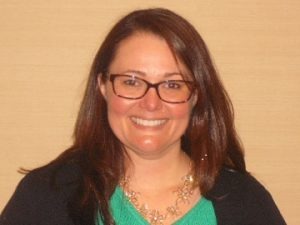Protecting Seniors in Your Care: The Hidden Dangers of Mold and Mildew
Slips and falls are often highlighted as top risks in senior care community bathrooms. But one often overlooked threat is the presence of mold and mildew.
Mold and mildew can pose significant health risks, especially to seniors. According to the Centers for Disease Control and Prevention (CDC), mold can cause several health effects, including coughing or wheezing, burning eyes, and a skin rash. Those with asthma or mold allergies may have more severe reactions, and people who are immune-compromised or who have chronic lung disease can get lung infections from mold.
Given that mold grows where there is moisture, it can be a threat anywhere in a senior care community. But it is particularly common in bathrooms. Fortunately, there are several ways that senior care communities can protect residents from mold and mildew.
Health Risks for Seniors in Senior Living Facilities

Rita Kuhn, CSI, CDT, vice president of commercial sales at American Bath Group
Rita Kuhn, CSI, CDT, vice president of commercial sales at American Bath Group, explains that senior care residents are particularly vulnerable to the health risks associated with mold and mildew for several reasons:
- Weakened immune systems: As seniors age, their immune systems naturally weaken, making them more susceptible to infections and illnesses caused by exposure to mold spores.
- Respiratory problems: Mold and mildew can trigger or exacerbate respiratory issues such as asthma, bronchitis, and allergies. Seniors with pre-existing respiratory conditions are at a higher risk of more severe symptoms than seniors without pre-existing conditions.
- Skin irritation: Mold spores can irritate the skin, leading to rashes and other dermatological problems, which can be more challenging to manage in older individuals.
- Cognitive effects: Some studies suggest a potential link between mold exposure and cognitive decline. Seniors may experience memory problems, confusion, and difficulty concentrating. A 2020 study tested the effects of mold exposure on mice and notes that a variety of cognitive, emotional, and physical problems including balance issues and visual abnormalities have been observed in mold-exposed individuals.
- Chronic health conditions: Seniors often have chronic health conditions, and mold exposure can worsen these conditions or lead to new health problems, making overall management more challenging.
Why Mold Is an Overlooked Danger
Mold is common in bathrooms, but it can potentially grow in other locations within a senior living community. “Mold can’t grow without water,” explains Kuhn. Bathrooms contain high amounts of moisture, especially if they aren’t properly vented. “Even high humidity will cause mold to grow, so during and after a hot shower, the bathroom needs to be cooled down and vented quickly,” Kuhn says. As a result, it’s critical to use products that don’t absorb moisture in the bathroom.
When mold does occur, it can go undetected. “It is a common misconception that mold is visible,” Kuhn explains. “Mold spores are invisible to the human eye.” She notes that it’s important to inspect any non-porous materials, including drywall, tile, grout, and ceiling tiles. “Check for leaks in the plumbing, ensure there is no condensation, and ensure that humidity doesn’t rise over 50%.”
The idea that mold always has a noticeable smell is a common misconception that could interfere with identifying it. “There are thousands of types of molds,” she says. “Some are harmless and some are deadly. Most mold does not smell, but some species emit an odor as they grow. It is not a good idea to depend on the smell to check for mold.”
Preventing Mold and Mildew in Your Senior Living Community Bathrooms
Senior living communities can take multiple steps to protect their residents from the dangers of mold and mildew. “In addition to maintaining proper ventilation, moisture control, regular cleaning and checking for mold, you can also consider the benefits of solid surface showers,” says Kuhn.
Solid surface showers offer several advantages when it comes to mold and mildew prevention:
Resistant to Mold and Mildew Growth: Porous materials, like the grout commonly found in many showers and baths, have small openings or pores where mold can take root and grow. In contrast, non-porous solid surface shower materials are highly resistant to mold and mildew.
“Solid surface and acrylic showers do not have grout,” explains Kuhn. “They may have simulated grout lines that look quite real.”
Easy to Clean: Non-porous material is also easy to clean, saving time and simplifying the process of maintaining a healthy environment for residents. These showers can be easily cleaned by wiping the walls down with a standard cleaning pad and cleaning solution.
Seamless Design: While grout lines and joints can be a breeding ground for mold and mildew, a solid surface shower minimizes those risks. These showers have a seamless design with minimal joints and grout lines to reduce the risk of mold growth.
Customizable: Solid surface showers can be customized to meet a senior care community’s specific accessibility needs, ensuring they are safe and comfortable for residents to use. Being able to customize a shower is important when renovating a community. “Many senior living facilities are upgraded every 10 to 20 years, and renovations come with their own needs,” says Kuhn. If plumbing can’t be relocated, a shower might need to have a custom drain location or a non-standard plumbing size.
Planning a Shower Renovation
Solid surface showers offer many advantages to senior care communities, and they can be installed during a bathroom renovation. The process begins with removing the old shower. “It is possible to lay solid surface shower walls over old tile, but the tile should be inspected carefully,” Kuhn says. “Code compliance requires a certain inside dimension, so laying solid surface over the tile would reduce the shower size, and it may not pass code inspections.”
She notes that it’s typical to demolish old showers, then install new mold-resistant drywall. Next, the shower pan is installed first, followed by the back wall, and then finally followed by the side walls. The walls are glued to the drywall, and the seams are caulked.
“We also have one-piece solid surface showers,” Kuhn notes. “If they can fit through the doorways, this is the best solution because they have no seams at all for 100% protection from mold. This one-piece shower is pushed into the shower alcove and screwed to the studs. Then drywall is attached to the flanges.”
Protecting Senior Care Residents From Mold
Mold and mildew may seem like minor facility maintenance issues, but they can pose significant health risks for residents. By staying vigilant, practicing preventive measures, and considering the benefits of solid surface showers, senior care communities can protect their residents from the hidden dangers of mold and mildew. Contact American Bath Group today to learn more about how a solid surface shower can help you to protect your residents.

Paige Cerulli is a contributing writer to i Advance Senior Care.
Related Articles
Topics: Design , Facility management , Featured Articles , Infection control , Risk Management











